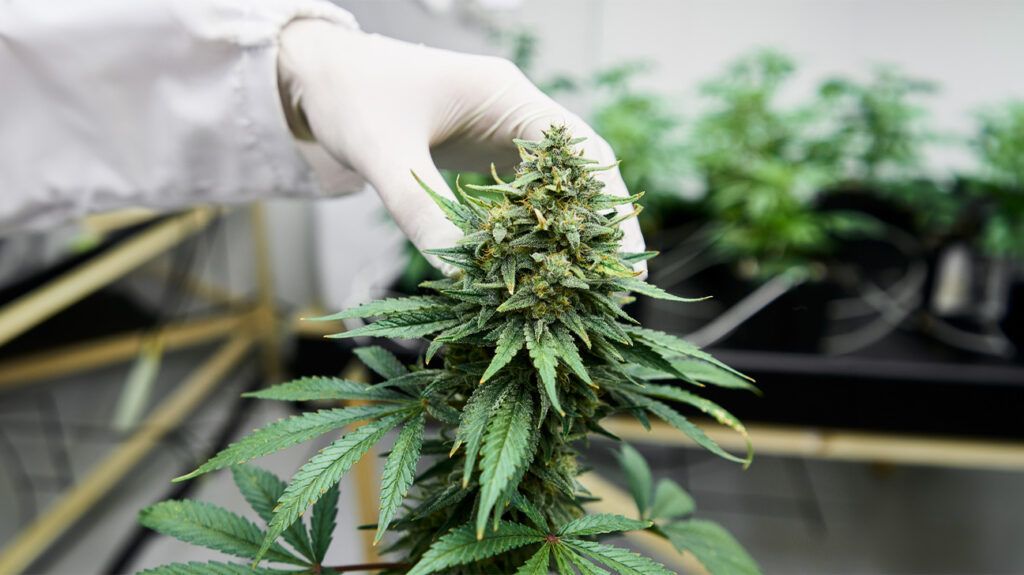The entourage effect is a theory that purports the synergistic effect of combining compounds in the cannabis plant. It suggests that using them together may provide more significant health benefits.
Research indicates that the compounds present within the cannabis plant may possess many medicinal and therapeutic benefits. Amongst the many compounds in the cannabis plant, the main active components in cannabis include cannabidiol (CBD) and tetrahydrocannabinol (THC).
THC is the compound responsible for the “high” many people associate with using cannabis recreationally. CBD does not cause a “high” sensation and may help treat pain, anxiety, inflammation, and other health problems. People may smoke cannabis in its whole plant form, which is legal in many states. It is also available as edibles, vapes, drops, oils, tinctures, and other forms, many of which are extracts of a single compound.
Some proponents suggest that using cannabis products containing CBD, THC, and other plant compounds can produce an entourage effect. This may help increase the effects of the cannabinoids and potentially their therapeutic benefit.

The
Products containing a range of cannabinoids rather than a specific extract are known as
The theory came to light in the late 1990s. Researchers looking into medical cannabis found that drugs using the whole plant may have been more effective for managing health problems than isolated extracts of compounds in some studies.
Most drug development involving cannabinoids uses individual extracts. However, some small studies on animals and cells have found that an entourage effect may occur when using both CBD and THC. Limited human studies have also demonstrated these effects.
While the entourage effect has produced statistically significant results in several studies, other literature does not suggest that it is stable or predictable.
As such, more research is still necessary to confirm its effectiveness, long-term safety, and how best to regulate whole plant cannabis products that companies market based on an entourage effect.
Cannabis contains
- CBD: This accounts for up to 40% of a cannabis plant’s extract. It binds to several receptors in the body known as endocannabinoid receptors. This contributes to its use as a seizure treatment, muscle relaxant, anxiety relief, and pain management. It does not produce the “high” that people associate with cannabis.
- THC: This is the main psychoactive compound in cannabis, meaning it produces a “high.” However, it may be clinically useful as an appetite stimulant for people with anorexia due to AIDS or chemotherapy treatment. THC may also provide pain relief. However, products containing THC are controlled substances in many U.S. states.
- Terpenes: These are compounds in the cannabis plant that are mainly responsible for its odor. According to a
2020 review , they might also be key players in the entourage effect. A2021 study involving mice also suggests that terpenes can help enhance the therapeutic properties of other cannabinoids, such as THC and CBD. Examples of terpenes include caryophyllene, humulene, and limonene.
The main potential benefit of the entourage effect is that the different compounds work together, or synergistically, to improve the therapeutic outcomes of medicinal cannabis products.
For example, a 2018 meta-analysis of 11 studies used data from 670 people who used cannabis to manage epilepsy seizures. The researchers found that a much lower dose of a CBD-dominant cannabis extract was necessary to reduce seizure frequency than pure CBD, even though both showed improvements.
Another study on breast cancer cells found that a whole cannabis extract was superior in treating the cells to pure THC. The researchers attributed this difference to other cannabinoids, such as cannabigerol (CBG) and tetrahydrocannabinolic acid (THCA).
Some evidence suggests that the pain relief properties of cannabis could be more effective and tolerable due to the entourage effect. A 2021 review notes that although more research is still necessary, there is evidence of the entourage effect in relation to pain relief.
A
However, much more research is necessary to confirm these benefits.
However, a 2019 review advised that a specific ratio called the Type 3 THC:CBD ratio may be a suitable option for treating symptoms of:
- inflammation
- pain
- addiction
- anxiety
- depression
- cancers
- skin conditions
- autoimmune diseases
This ratio is CBD-dominant and involves 1 part of THC for every 39.4 parts of CBD, or 1:39.4. Researchers have examined this ratio as part of a cannabis product called Caryodiol.
According to the National Center for Complementary and Integrative Health (NCCIH), some drugs containing single cannabinoids might
For example, an oral CBD solution known as Epidiolex has
The entourage effect refers to the synergistic effect of different compounds in the cannabis plant. This theory suggests that using these compounds in combination can provide more benefits than using them on their own.
The potential benefits may include boosting pain relief, seizure reduction, and depression and anxiety relief. Using cannabinoids in combination may also help reduce the possible side effects of taking them as isolates.
However, more research is necessary to confirm the safety, effectiveness, and clinical use of the entourage effect and medicinal cannabis in general.
